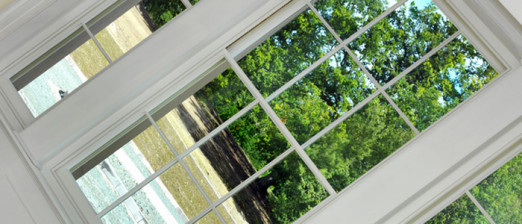Poor energy performance is a compromise often associated with owning or living in a historic property.
However, one project aiming to show that this doesn’t have to be the case is the renovation of Templeton, the grand former home of Sir Winston Churchill in Roehampton, South West London. The Grade II listed building is currently undergoing a transformation from a student residence for the University of Roehampton into a unique and luxurious family home.
One of the most common barriers to improving the energy performance of protected heritage buildings is the strict regulation of replacement glazing. For listed buildings, it’s typically a stipulation that the windows that need replacing will be replaced like-for-like with those originally featured in the property – at least when it comes to their physical appearance.
In order to meet this requirement, while also delivering the insulation that owners of a lovingly restored property might expect, Templeton’s owner, David and Laura Rich-Jones asked their contractor Richstone properties to find a glazing solution that would deliver on both counts.
The solution? A combination of high-end bespoke carpentry and an innovative vacuum glazing product, Pilkington Spacia™, which delivers the thermal performance of high-performance double glazing but with a total thickness of just 6.5mm – close to that of single glazed windows.
Unlike most double glazed units, which contain air or another gas in the cavity between the two panes, Pilkington Spacia™ features a vacuum, minimising conduction of heat through the unit. The spacing between the sheets of glass is maintained using a grid of transparent microspacers – small pillars measuring just 0.5mm in diameter, placed 20mm apart across the unit.
As well as the thickness of the glass, another stipulation made by the conservation officer was that the double reflections often associated with double glazing be avoided, and this is another feature of Pilkington Spacia™. Because of the presence of the microspacers limiting deflection of the glass panes, Pilkington Spacia™ produces no discernible double reflection.
Low profile, high performance
With 157 windows and 37 external doors, re-glazing the building is no small task. To carry out the project, Richstone has appointed Gowercroft Joinery, a Derbyshire-based carpenter specialising in windows and doors for heritage buildings.
The age of the building and the size of the windows and doors means virtually no two frames are exactly the same size, and each one has had to be measured and manufactured to an individual specification. The project is a real labour of love, and the total manufacturing time is expected to be around 12,000-15,000 work hours.
Andrew Madge, managing director of Gowercroft Joinery, said: “It’s a privilege to have been selected to work on such an impressive and important property. It’s great to see the investment being made to restore this building to its true former glory while also bringing its energy performance into line with modern standards.
“We specialise in heritage projects and have worked with a wide variety of glazing systems designed for heritage properties. One of the major benefits of working with Pilkington Spacia™ over thinner versions of traditional air or gas-filled double-glazed units that are often used is the larger pane sizes it offers.
“With thin standard double glazing units, the cavity is only 4-6mm thick and in large panes there is a risk that the two panes will bow inwards and touch, vastly affecting the efficiency of the unit.
“Even though the styling of heritage windows normally prevents large uninterrupted panes, the bigger unit sizes allows us to apply glazing bars to the surface to create the traditional effect in a very convincing way, rather than constructing each panel individually. This significantly improves energy performance while also reducing manufacturing costs.
“The technology allows us to deliver the best of both worlds – windows and doors that look to all but the expert eye like traditional single-glazing but which really deliver the levels of heat and noise insulation normally only available from much thicker double glazing.”
Peter Maj, area sales manager at Pilkington United Kingdom Limited said: “When it is complete, this will be a stunning property and the beautiful, hand-crafted glazing will be one of its defining features. We’re proud that the technology offered by Pilkington Spacia™ means no compromise has to be made between modern standards of comfort and energy efficiency and the need to preserve the character of our architectural heritage.”
Lindsey Eden, head of development at Richstone Properties, said: “We have been delighted to work with Pilkington and Gowercroft Joinery to achieve such an authentic window and door design during the refurbishment of this beautiful family home. Pilkington Spacia™ was a particularly attractive solution, given the thinness of the glazing and its thermal performance and noise insulation properties’’.

